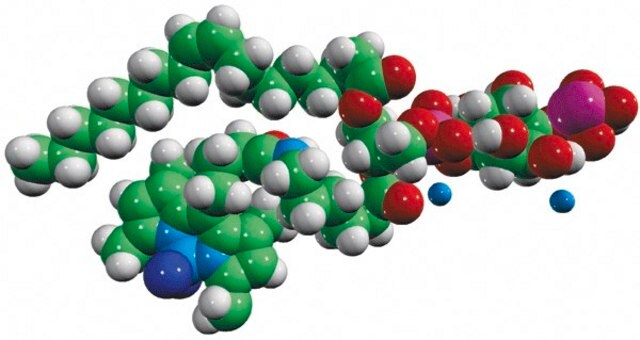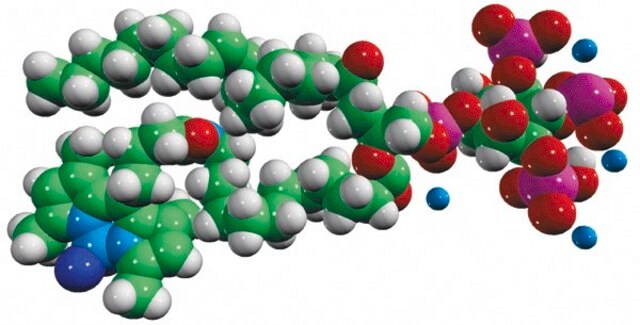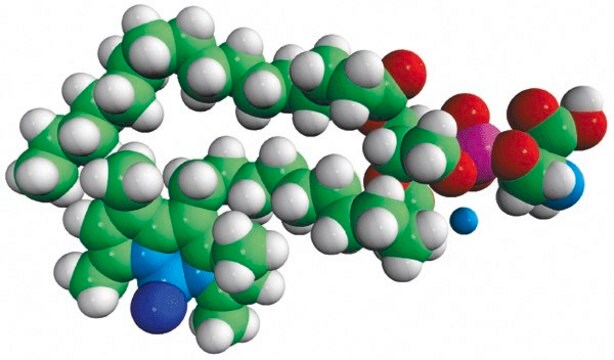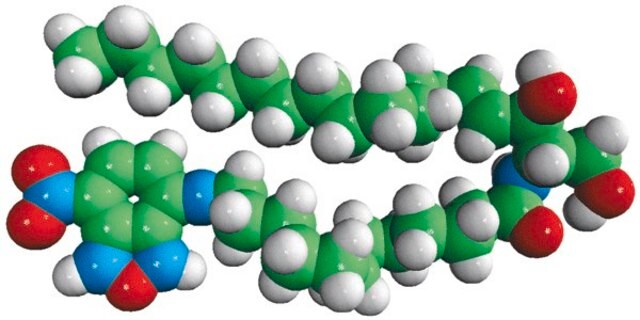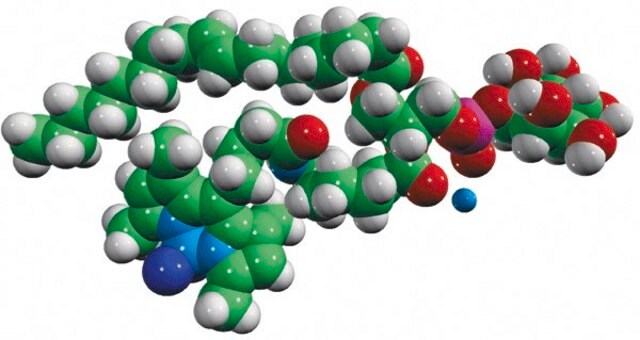810186P
Avanti
TopFluor™ PI(3,5)P2
Avanti Research™ - A Croda Brand 810186P, powder
Synonim(y):
1-oleoyl-2-{6-[4-(dipyrrometheneboron difluoride)butanoyl]amino}hexanoyl-sn-glycero-3-phosphoinositol-3,5-bisphosphate (ammonium salt)
About This Item
Polecane produkty
Próba
>99% (TLC)
Formularz
powder
opakowanie
pkg of 1 × 50 μg (with stopper and crimp cap (810186P-50ug))
producent / nazwa handlowa
Avanti Research™ - A Croda Brand 810186P
Warunki transportu
dry ice
temp. przechowywania
−20°C
Opis ogólny
Działania biochem./fizjol.
Opakowanie
Informacje prawne
Kod klasy składowania
11 - Combustible Solids
Klasa zagrożenia wodnego (WGK)
WGK 3
Temperatura zapłonu (°F)
No data available
Temperatura zapłonu (°C)
No data available
Wybierz jedną z najnowszych wersji:
Certyfikaty analizy (CoA)
Przepraszamy, ale COA dla tego produktu nie jest aktualnie dostępny online.
Proszę o kontakt, jeśli potrzebna jest pomoc Obsługa Klienta
Masz już ten produkt?
Dokumenty związane z niedawno zakupionymi produktami zostały zamieszczone w Bibliotece dokumentów.
Nasz zespół naukowców ma doświadczenie we wszystkich obszarach badań, w tym w naukach przyrodniczych, materiałoznawstwie, syntezie chemicznej, chromatografii, analityce i wielu innych dziedzinach.
Skontaktuj się z zespołem ds. pomocy technicznej
